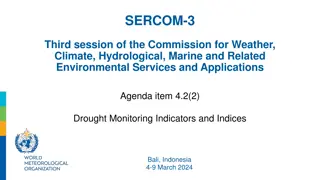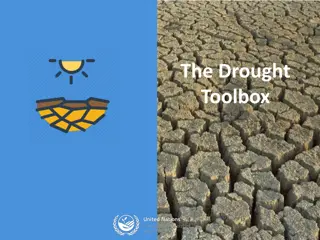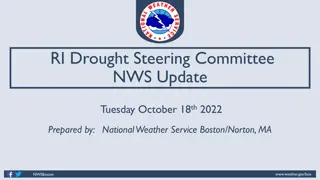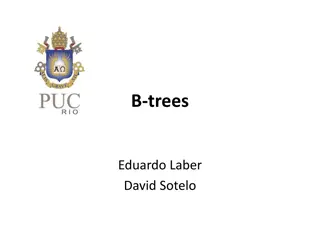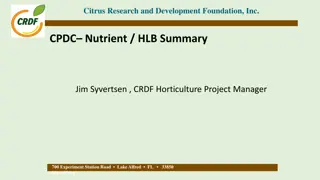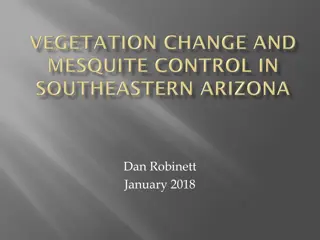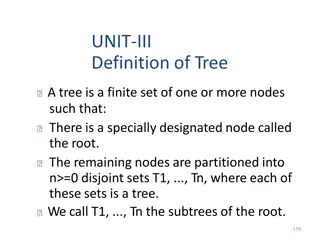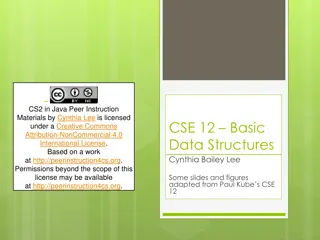Maintaining Landscape Trees During Drought: Tips and Advice
Learn practical tips for keeping landscape trees healthy during drought conditions. Understand the importance of watering, soil types, and managing tree root systems. Discover how to adapt to prolonged droughts and provide optimal care for established and young trees to ensure their well-being in challenging environments.
Download Presentation

Please find below an Image/Link to download the presentation.
The content on the website is provided AS IS for your information and personal use only. It may not be sold, licensed, or shared on other websites without obtaining consent from the author. Download presentation by click this link. If you encounter any issues during the download, it is possible that the publisher has removed the file from their server.
E N D
Presentation Transcript
H2O for HOAs Maintaining landscape trees during drought
Fred Roth, Ph.D. Taught at Cal Poly for 33 years Consultations on trees since 1990
So---when is the drought gonna end? Probably never! We need to adapt to it.
Full disclosure statement! 1. These recommendations are for keeping established trees healthy. Young trees will need more water to survive in their first year. Also, if you need to grow your trees, the more water you apply, the faster your tree will grow. 2. My recommendations are based on a medium textured soil, or LOAM. If you have a clay soil (fine texture) or a sandy soil (coarse texture), get the help of an irrigation technician to modify my suggestions. Loam soils are the most common in Southern California, so most of you will be working with a medium textured soil.
Accepted model for tree root systems:
What does tell us about where the root are? Close to the surface Few below 3 feet Well beyond the spread of the tree s crown (drip line)
Trees and turfgrass do not like each other! -Grass doesn t like the shade -Trees don t like the competition/some grasses can produce toxic materials Trees can do well on half of what turf requires to look good If the water is cut off, grass will suck the soil dry as it dies
How water moves in soil Mostly downward by gravity Some water will move sideways, but much slower than downward. (Think about a stubby carrot) From a single emitter, over the time it takes to get water down to 3 feet, it will travel only one foot outward. If using a drip system (I recommend) and you want to wet just half the surface, the drip lines should be four feet apart.
First step: 1. Get rid of the turf under the crown of the trees 2. Replace it with up to 4 inches of mulch (chopped tree waste is good) 3. Apply the mulch from the base of the tree to the edge of the tree s crown (DO NOT PILE UP against the trunk!)
Next step Install an irrigation system that will wet half the area under the tree s crown. Don t irrigate closer than 3 feet from the trunk (can promote a fungus) The system must apply water slow enough that it doesn t puddle run off. (It will take hours) Turn it on once a month during the warm months (may be longer than summer)
Drip irrigation is ideal for tree applications Netafim is a flexible tube with emitters placed inside the tube. It is easy to arrange in any pattern you choose. Google the following for more information: https://ccuh.ucdavis.edu/tric TRIC = Tree Ring Irrigation Contraption
Heres what not to do! 1. Do not use a watering needle if fully inserted in the soil you will put the water below the root system 2. Forget about porous tubes that are supposed to get the water to the deep roots they don t work as they are designed to.



